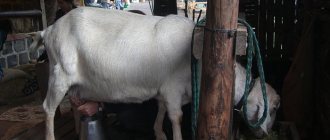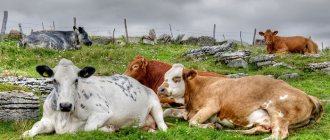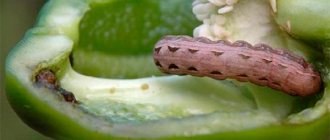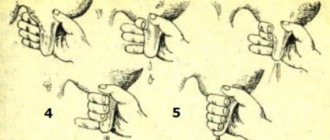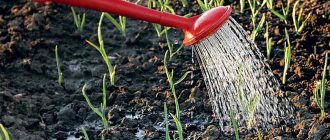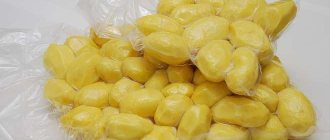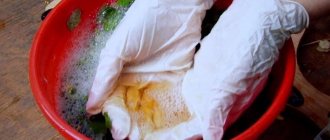Preparing the first kitten's udder
Each housewife has her own secrets for preparing a goat's udder for milking. If the animal is almost always outdoors, then in some cases it is correct to use detergents to wash the udder . To avoid irritation or other allergic reactions, it is better to use hypoallergenic products, ideally if it is baby soap. In some cases, it is correct to use laundry soap.
Some goat breeders resort to bleach to wash the udder. Moreover, reviews of this method are quite positive; its anti-mastitis properties should also be noted.
In order to prepare this remedy, we need:
- 1 liter of water with a temperature no higher than 37 degrees;
- no more than 2 tbsp. spoons of chlorine-containing product;
- 1 drop of any organic product with a cleaning effect.
The effectiveness of this tool can be easily assessed in practice. Many goat breeders note that thanks to this solution, milk comes out without bacterial flora and contamination. It is necessary to monitor the water temperature, because a lower degree can slow down the process of milk separation. Rinsing the udder with water that is similar to body temperature will keep the goat relaxed as well as improve circulation.
Washing
- Using the prepared solution, wash the udder thoroughly.
- Dry using paper towels.
- After completing the milking process, dip the teats into the prepared product without rubbing.
To prevent infection and third-party microflora, use disposable containers.
Of course, in most cases, it will be enough to wipe the nipples with damp (unscented) wipes and wipe the udder with a clean cloth. Preparatory moments for milking are very important, as they help to disinfect the milk and preserve the natural protection of the udder surface.
Massage
It is good to massage the udder before each milking ; a few minutes will be enough.
A well-performed massage helps increase the amount of milk, and also has a positive effect on the condition of the mammary gland, improves blood flow, metabolism and easier outflow of milk from the alveoli. The milkmaid or the one who will milk the goat should have their nails cut short and there should be no rings on their fingers. It is better to wash your hands with laundry soap. If you want to keep the milk as pure as possible, use sterile gloves.
How to milk a goat correctly
We recommend reading our other articles
- Cherry Iput - variety description and care
- Fungicides for grapes
- Strawberry variety Monterey
- Corn varieties
How to milk a goat correctly
Before you learn how to milk a goat, you need to understand how to do it correctly. This subsection discusses where a goat can be milked and what procedures are performed before milking.
In modern goat pens there are special places reserved specifically for milking. There is a table (podium) where the goat is placed, a head mount (experienced breeders do without it) so that the animal is comfortable and the breeder is safe, as well as water, various treats (barley with oats, chokeberries, raisins, bread or something like that) – to distract the female. In a relaxed state, she will eat calmly, and the process will not bring her discomfort. How to properly milk a goat after it is placed on the table?
When the goat is already on the table and ready for milking, its udder must be washed first. A soft cloth is moistened in warm water, wrung out, and the entire udder and nipples are thoroughly washed with it, and then wiped dry with another cloth. Is it that important? There is an opinion that this procedure is not necessary for a goat, but in fact this is not the case. One way or another, she lies on hay and grass while grazing, communicates with other animals, and can touch dirty objects. Particles of dirt remain on the udder, which can then get into the milk, so it’s not worth the risk, especially since the washing procedure lasts no more than 5 minutes.
Important!
After each milking, the cloths used to wash and wipe the goat’s udder must be doused with boiling water, and every other time cleaned with boiling water and soda. If you don’t have time, you can simply wash them with a simple powder.
The next procedure before milking is kneading. Udder massage allows you to express the maximum amount of milk so that it does not remain in the udder and subsequently cause dangerous diseases such as mastitis. The massage is done very simply - take the udder in your hands and simply knead it lightly with your hands, warming up, so to speak. That's it, the preparation is over, below we will discuss how to milk a goat - the main methods and their features.
Milking methods
At the moment, several tactics are known on how to milk an animal. Each individual method is used depending on the condition of the animal’s nipples and udder:
- Milking with a fist is practiced in more mature goats, since they have a more developed udder and teats;
- for small nipples, pinch milking is used;
- the combined method is suitable for animals with small nipples.
- Fist milking gets its name due to the fact that during milking the hand must be clenched into a fist and clasped around the udder.
- Pinch milking is used mainly for young goats with a small amount of milk. It is carried out using three fingers, with soft and rhythmic movements, without much impact on the nipple.
- The combined method of milking a goat is considered optimal. First, the udder is grabbed with a fist, and then the nipples are squeezed out with a pinch.
What is needed for milking?
Many beginning farmers understand milking as a short period of time when goats are intensively milked, which allows them to get a large yield. But this is not so - milk production accounts for up to half of the entire lactation and lasts until the daily productivity decreases. That is, while your goat responds positively by increasing milk production to improving the quality of feeding, maintenance and care, milk production continues.
Milking technologies will differ depending on the type of housing and goat breed. Thus, downy and woolly goats are usually left with the young animals, in which case milking is usually not carried out. Due to low productivity, a small amount of milk is obtained from the queens, which does not cover labor costs. The produce is only enough to provide milk for a kid. In dairy goat farming, early weaning is increasingly being practiced - and in the first days you will have to milk goats up to 3 times a day.
Features of milking
Milking of goats is carried out manually or using mechanical devices. It is best to use manual milking for milking, as udder massage is of great importance. But when working with a herd of more than 5 goats, it is impossible to milk manually - it’s a lot of work and a waste of time, so it’s better to use milking machines: mobile or “Parallel” systems. The “Carousel” installation, used when working with large herds (from 500 heads), is the least suitable for milking - it does not provide udder massage. Therefore, new units are being developed in which udder massage will be carried out by special robots.
The main principle of milking is that there should be no milk remaining in the udder after milking.
Before milking, the udder needs to be cleaned - if it is dirty, use water, but in most cases a damp cloth is enough. Be sure to clean the nipples and wipe them after washing. It is recommended to milk the first streams of milk on the floor or in a special bucket; they contain dirt and germs. All this work is needed to improve the quality of milk. There is an opinion on how to milk a goat: to improve the flow of milk, you should irrigate the skin of the udder with cold water, but there is no scientific confirmation of this fact, so warm water should be used for washing.
Milking technique:
- get the first portion of milk by hand or using a milking machine;
- carry out a massage of the udder - circular movements, stroking from the base of the gland to the nipples;
- re-milking;
- squeezing the udder - squeezing the gland.
A combination of repeated milking and udder massage is necessary to ensure complete release of milk from the smallest ducts and alveoli. This produces milk containing large amounts of fat and protein. But most importantly, overcrowded alveoli and ducts prevent new milk formation, reducing the animal’s productivity .
The number of milkings per day depends on the productivity of the animal and the volume of the udder. It is believed that it is enough to milk goats of downy and meat breeds once a day - they have small udders and cannot produce a lot of milk. On the one hand, this is correct, but on the other, a small volume of the udder quickly fills, and with infrequent milking, this leads to inhibition of secretion formation. Therefore, it is worth milking the goat at least twice a day for the first two weeks after lambing. If milk yield indicators are increasing and their amount is greater than what was received during the same period of the last lambing, then it is likely that you did not receive the required amount of milk last time.
Dairy goats with high productivity should be milked three times a day for the first 10 days. The number of milkings should not be reduced if milk yield continues to increase. If the level of daily productivity decreases, then you can switch to double milking.
Milk should always be received at the same time - the goat’s body adapts and the udder is ready to “give” milk at a certain time. If you decide to milk early, this will lead to inhibition of reflexes. A delay in milking leads to udder overfilling and milking on its own.
Special feeds and diets
To increase milk yield, goat feeding is changed 2 months before lambing. It is necessary to prepare the goat for future productivity, as well as provide nutrients and energy to the growing fetus. Therefore, after starting, concentrates and root vegetables are gradually added to the diet, while the rate of hay, haylage, grass and other bulky feeds does not increase, and may even decrease, as the enlarging uterus compresses the rumen.
During the dry period (2 months before lambing), the supply of dairy feeds should be reduced: root crops, silage, green grass. The main emphasis in feeding is on the nutritional value of the diet - it must be balanced in protein, minerals (calcium, phosphorus), and vitamins. It is especially important to stop feeding succulent feed a week before lambing; if this is not done, udder edema often develops.
Immediately after lambing, advance feeding should be organized for milking. This means that the diet in terms of energy, protein, fat and other elements must exceed the needs of the goat during this period. This allows the goat to be milked and prolong lactation at a high level. Advance feeding is carried out until the daily milk yield goes down; if you continue to intensively fatten the animal, this will lead to obesity and the milk yield will decrease even faster.
Dairy feeds are of great importance during the milking period. These include foods with a high moisture content: silage, green grass, root vegetables, tubers, vegetables. Dairy goats are given up to 3 kg of silage per day; the same amount can be fed with a mixture of beets, carrots, and turnips. It is best to give vegetables in chopped form; you can add haylage, bran or mixed feed to them.
Dairy goats must be given concentrates; the daily supply of compound feed can exceed 1 kg. Feed recipe for dairy goats, %:
- barley – 25;
- oats – 15;
- feed wheat – 15;
- wheat bran – 11;
- corn – 10;
- Sunflower meal – 10;
- feed yeast – 5;
- herbal flour – 5;
- vitamin-mineral premix – 4.
Care and maintenance
On household plots, small farms and in farms raising downy and meat goats, queens are usually raised together with kids. This allows you to significantly reduce the labor intensity of caring for animals - only an adult goat will have to be fed, and the young animals receive food in the form of milk. At the same time, the quality of the kids increases - they grow strong and healthy.
But this technology has a significant drawback - the farmer does not receive milk until weaning, which occurs at 2.5-3.5 months. This is a big loss, especially if the goat produces a lot of milk. Therefore, it is necessary to practice milking suckling goats:
- at night the kids stay with their mother;
- in the morning the goats are separated, grazed or kept in a separate pen;
- At this time, the kids are fed with concentrates and mash;
- at lunchtime the first milking takes place - part of the milk should be left and the goats should be driven to the young animals for 2-3 hours;
- the adult livestock are again killed, sending them to pasture;
- evening milking, after which the goats are left with the young animals.
Milking technology usually begins at 6-7 months, when kids can consume other types of feed other than milk. But in the early period, you should also milk the goat additionally - if milk remains in the udder, its productivity will decrease. This is especially important for goats with high productivity and with one kid.
When can I start?
The presence of an udder in a goat is not a reason to expect a large amount of milk from it. To become milk-bearing, she needs to become pregnant, bear a child, and produce offspring. The first milk comes immediately after lambing.
The goat's mammary gland is designed in such a way that it produces exactly as much milk as the kid needs. But it is worth noting that high-yielding goats produce so much milk that it is enough not only for the kids, but also for personal consumption.
If your pet is pregnant, it is not recommended to start milking her until 30 days after birth. During this period of time, it is advisable to give all the milk to the kids, since they need to strengthen the body and gain strength.
In order to receive a stable amount of milk from an animal, it is necessary to adhere to the rule: milking must be carried out at the same time. This is how the animals develop a conditioned reflex to release milk, so the udder will be full just in time for milking.
In the summer, you usually need to milk the goat twice a day and in the winter - once.
The total amount of milk per day can reach up to 3 liters. Regardless of the volume of milk yield, it is recommended to milk young goats more often; this will improve productivity by about 20–25%.
How to milk a goat after lambing
Also check out these articles
- Cabbage variety Sugarloaf
- Eggplant Diamond
- Cochin chicken breed
- Hungarian Mangalica
After lambing, females need regular milking. In nature, all the milk is drunk by the goat, but on farms, to facilitate the procedure, and also to collect all the milk as much as possible, goats are specially milked, even if the kids are not taken away from them.
The first milking is carried out 1.5 hours after the baby is born. During milking, it is advisable to restrain the animal, although if the goat is calm and knows the owner well, then this is not necessary. The milk obtained after milking is usually kept for up to 3 days and then given to the offspring from a bottle, although many breeders give fresh milk.
How much milk can you get?
The amount of daily milk yield directly depends on the breed and individual characteristics of the goat. Milk yield is also influenced by diet and the conditions in which the animal is located. If you want to get enough milk from your goat, choose a dairy breed.
Swiss breeds are considered the most productive and picky. From such animals, if all recommendations are followed, you can get up to 8 liters of milk per day. However, a goat's milk yield is not a constant value. The amount of milk changes with age and the number of lambings. The average lifespan of this animal and milking is 15 years.
Without kids
First, colostrum (a thick yellowish liquid) is formed, and only then milk appears. It is secreted until the goat kids begin to eat adult food. If this is not the first pregnancy, then the goats must be launched 1-1.5 months before lambing. This increases the daily amount of milk and its quality. Usually the goat is fed food with a high concentration of protein.
Experts recommend:
- The first milking of the goat should be done no later than 1.5-2 hours from the moment the offspring appear;
- Before this, it is generally undesirable to milk her;
- for the first week, milk 4 times a day, then switch to a three-times-a-day regimen;
- take into account the time of year: in summer the goat is milked three times a day, in winter - twice.
There is a lot of controversy about the need to keep a mother without kids from the moment of birth. Some leave them together to feed with mother's milk until the age of 2 months, others take them straight away, preferring early weaning. The choice here remains with the owner.
Important! On average, goats produce milk for about six months, but in some dairy breeds the lactation period lasts up to 11 months.
How to increase your performance?
Since the quantity and quality of milk is influenced by many factors (including weather conditions and the attitude of the owner), it is necessary to follow some rules:
- Green foods should predominate in the animal’s diet; freshly cut grass is ideal;
- provide maximum access to water; the goat drinks up to 5 liters of clean water per day;
- regular veterinarian examination;
- mandatory walking, maximum stay in the fresh air, the winter season is no exception;
- avoid pregnancy in the first year of life, as additional stress on a young, fragile body will only harm;
- Products such as pumpkin and apples have a positive effect on the quantity and quality of milk and should be present in the diet daily.
The productivity of milk production in goats depends 70% on care and nutrition, and 30% on the breed.
What are the different techniques for expressing goat milk?
To get more milk, learn an effective technique, because a good farmer must know how to milk a goat with his own hands. If you have previously worked with a cow, this does not mean that milk yield from a goat will not be difficult, because their udders are different in structure, therefore, the techniques are also different. There are three types of manual milking techniques:
- classical – this is when the farmer stands at the side of the animal, which is rightly considered the most correct and hygienic technique;
- Moldavian - suitable for non-dairy breeds in which the glands are poorly developed, the goat breeder is located behind the animal;
- combined method - used to develop the mammary glands of a goat.
Certain milking techniques should be used depending on the shape of the udder and the breed. If we take a closer look at the techniques that allow us to achieve greater milk productivity, then there are also three types of them: milking with a pinch, with a fist, and a mixed method.
Using fists to milk goats
- First of all, rinse the udder with cold water, then take the nipple with your index finger and thumb and gently express the milk.
- We carefully grasp the udder with the ring finger, thumb and little finger, and express the liquid.
- We try to milk every drop of milk without haste, since it is the last portions that contain such a valuable and healthy product as goat fat, rich in important microelements and vitamins.
Interesting
While milking a goat, you will notice how your hand gradually clench into a fist, hence the name of the technique.
Learning to express milk with a pinch
This technique is used when the female has lambed for the first time, that is, the method is suitable for young queens. The essence of this method is to carefully grasp the udder with three fingers: the thumb, ring and little finger, then begin to milk the cattle slowly, with smooth and rhythmic movements. The pinch milking technique is an intermediate stage, after which they move on to combined techniques.
The essence of the combined method
The mixed method of expressing goat milk is a hypostasis of the two previous techniques. We milk the main portion with our fist, gently grasping the udder, and milk the nipples with pinches. The procedure should be performed with soft circular movements, putting light pressure on the mammary glands as your hand approaches the bottom.
If fist milking is used when the udder is large and the mammary glands are developed, and the pinch method is practical for goats that produce little milk, then the combined method is suitable if the cattle has medium-sized teats. Take this dependence into account before milking the goat, and pour out the first 3-4 streams, since they may contain pathogenic microbes.
Features of animal feeding
In order for the milk yield to be high, goats need to be provided with a complete and balanced diet. It includes the following items:
- daily consumption of several kilograms of roughage;
- the daily norm of hay and meadow grass should be approximately 3 kg per adult animal;
- sometimes hay can be replaced with branches; they contain several times more nutrients;
- about 1 kg per day in the diet should consist of concentrates in the form of oats, corn, barley and bran;
- Bran soaked in water, finely ground grain and cake must be present.
During the day, the goat should receive at least 15 g of salt, with also at least 25 g of chalk or bone meal. The quantity and quality of milk is positively influenced by the consumption of food waste, as well as carrot peels.
Content Features
The kids are weaned immediately after birth or after 2-3 days, leaving them with the uterus for this period. After weaning, the young animals are placed in separate rooms - goat sheds, where a special box is allocated for each small goat. These are small boxes made of wood or plastic with slatted floors on which straw is spread.
It is important to maintain hygiene in the goat shed - the bedding is cleaned and the bedding is replaced daily during morning and evening feeding. Every day you should treat the room with quartz lamps
During technical breaks (when there are no kids in the box), the premises are disinfected using special means, and the wooden boxes are additionally covered with whitewash.
In rooms where young goats are kept, it is important to maintain a constant microclimate. It is important that there are no temperature changes (for newborn young animals, a temperature of 15-20 degrees is desirable); for additional heating, infrared lamps are installed above the cages; if the kids are cold, they simply stand under them
The lamps are installed on the border of two adjacent boxes. The ventilation system in the barn should work well - it is better to install forced, supply and exhaust. Ventilation systems combined with heating devices are often used, which allows warm air to be supplied to the goat house.
Automation and mechanization of the housing and feeding system is of great importance when raising goat kids without queens. Thus, on large farms, boxes with newborn young animals are equipped with teats, which are connected to a device that prepares food from milk replacer and water. It automatically doses the mixture, distributing it over 5-6 daily feedings. This greatly simplifies work on the farm and reduces operator intervention.
Grown-up young animals are divided into groups by sex and age. They are kept in small pens where the bedding is changed twice every day. In such enclosures there are feeders for hay, concentrates and liquid feed (CM, chatterboxes). Subsequently, goats for repair are placed in farms identical to adult animals, and goats, culled goats and female goats are sent for fattening. It takes place in two forms - fattening and fattening on concentrates and cheap feed.
How to care?
The main care for goats is to keep them warm, dry and clean. Otherwise, untidy keeping of animals will harm their health and also negatively affect the taste and smell of milk.
Litter
Goat care begins with bedding. It should always be dry and plentiful. An ideal material for bedding would be sawdust ; they perfectly absorb moisture and do not stain the animal, unlike straw.
Timely removal of manure
It is recommended to change the manure daily.
And also thoroughly clean the barn every two weeks. However, during lambing it is recommended to remove manure much less frequently to avoid cooling the premises.
Machine milking
If desired, you can use a goat milking machine. There are a number of pros and cons, since such models provide sufficient stimulation only of the main milk ducts in the teats, but not the “cisterns” in the udder. Machine milking is more hygienic, but it does not eliminate the need for udder massage. It is done every milking to avoid mastitis.
Milking a goat using a machine
Milking machines help produce separated milk with a lower percentage of fat content, and use the cream to make butter and cheese. At the same time, milking machines with a frequency of up to 60 milking cycles per minute stimulate the udder and avoid the inhibiting spasm reflex. It is estimated that in most cases, increasing the number of pulsations helps to milk all the milk, while the milkmaid must monitor the condition of the goat's mammary gland and carry out preventive measures.
Why milk a goat?
Under natural conditions, producing milk is a way to adapt to survival. Milk contains a huge amount of nutrients that are best suited for feeding young offspring. After lambing, the mother’s body produces a significant amount of milk, which is more than enough to feed the offspring. Cattle breeders take advantage of this feature. Excess milk is successfully extracted from animals and used for further purposes. However, as kids grow older, their mother’s body gradually loses the ability to produce the product.
To prevent a productive animal from turning into a barn goat, so-called milking is carried out. It is a complex of various methods aimed at activating lactation, as well as extending the productive period of animals. Milking is a mandatory measure; without this, the feasibility of breeding dairy goats is reduced significantly. Over the course of a year, artiodactyls are capable of producing 1–2 generations of offspring, while natural lactation can last for several months. But after high-quality milking, it can be observed for up to 9 months.
Proper preparation of the animal for future milking
Milking takes place in a separate room or in a common barn, but in a special machine. It is a wide shelf on which the female stands. The milker milks the animal while standing nearby or sitting on a stool. Place a bowl of food near the goat's head. Some goat breeders prefer to do without treats, rewarding their pet with a cracker only after milking is completed.
Beginning farmers do not know how to milk a goat after lambing, which does not allow touching the udder. A timid and untrained animal becomes nervous and may kick, causing milk yield to rapidly decline. To avoid problems, even during pregnancy, the first-calf goat, as the first-calf goat is called, begins to prepare for future milking. A dairy animal should not be afraid of a person and his touch; the pet needs to get used to standing still calmly during milking.
A pregnant goat is taught to jump onto a bench, luring it with treats. When the goat is standing on the shelf, they pet it, gently touching the udder. It is necessary to achieve calm behavior of the nekozi when the milker touches the papillae.
The udder massage is carried out carefully and carefully, with light stroking of the palms from bottom to top. You should not knead the udder, pull the nipples too hard, or allow colostrum to leak.
Reproduction after miscarriage and false pregnancy
The gestation period is very important for the goat and its owner. The lactation process is not interrupted if a miscarriage occurs. It is perceived by the animal’s body like natural childbirth.
Milking after an unexpected miscarriage or false pregnancy is carried out similarly to milking after any lambing. In this case, it is necessary to consult with a veterinarian so as not to miss the disease of the animal.
How to increase your milk supply
The diet of each animal depends not only on the capabilities of the owner, but also on the time of year. In the summer, for a higher level of milk, goats are often taken out to pastures and given the opportunity to eat grass and vegetables. You should not limit them to water, as this also affects lactation. Flowers and leaves of field chamomile help. Also remember to change the grazing area from time to time, as goats eat the grass from it quickly.
Goat milk is healthy
In winter, the diet changes greatly, and it becomes difficult to retain milk, but it can be done. To do this, you need to give the goats root vegetables, hay and grain. It is necessary to include minerals and vitamins (especially calcium and potassium) in their diet.
Milking a goat is not difficult. It is enough to know a few rules to do everything well and exclude the development of diseases (for example, preliminary massage). After lambing, the number of milkings increases up to four times, and then gradually decreases, starting from the second week, to the usual level. It is also prohibited to milk a goat before lambing. Carry out the procedure, following the rules obtained from our article, and you will receive a large amount of milk without harming the animal.
Complications during lambing
Childbirth in a goat is not always easy; it happens that it is complicated by expected or unforeseen reasons. There are three main causes of complications in lambing:
- Weak labor.
- Narrow pelvis.
- Incorrect position of the fetus in the womb.
Knowing the reasons, a person in most cases is able to help the animal on his own.
The afterbirth did not come out
After lambing, a situation may arise when the rejection of the placenta by the uterus is delayed for more than 6 hours, and the placenta is not able to come out. The bubble continues to hang at the back, and the goat's condition is alarming.
Cutting off a hanging bubble or tugging on it in an attempt to pull it out is strictly prohibited.
In this case, you need to help the animal like this:
- To stimulate uterine contractions and limit the development of pathogenic microflora, you cannot do without oxytocin and an antibiotic (Gentamicin is suitable). Injections are carried out 2 times a day intramuscularly, 1.5 ml for 5-7 days.
- After the injection, gently but firmly stroke the goat's belly from top to bottom.
- When the placenta appears, hold it with one hand, but do not pull. Continue massaging your abdomen. If the outcome is favorable, the tension will release the placenta. If this does not help, invite a veterinarian to examine you.
During this period, you can feed the animal with a decoction of nettle and chamomile. They have a calming and hemostatic effect. It is possible to use douching with this solution or using chlorhexidine.
The fruit does not come out
Retention of the fetus inside indicates weak muscles of the uterus, which did not have time or could not strengthen before birth due to the low physical activity of the goat during pregnancy. The muscles of the uterus are not able to independently cope with the advancement of the fetus along the birth canal.
If labor continues for more than 12 hours, immediately give an intramuscular injection of oxytocin. If the problem cannot be solved, then the only way out is the help of a veterinarian. Possible indication for cesarean section. This is a forced measure used when the fetus is very large and labor is weak.
The fruit has partially come out but is stuck
Getting the fetus stuck in the birth canal is possible in several cases:
- The front legs are bent. Between contractions, gently push the baby goat inward and adjust the legs to straighten them. During the next contraction, you can slightly pull the fetus by the limbs.
Under no circumstances pull the baby goat by the legs unless there is any effort. This can lead to irreparable consequences.
- The fetal head is turned to the side. In the rest period between attempts, carefully adjust the fetal head with your hands.
- The baby goat rested against the vaginal wall. Wait until the contraction ends and carefully move the muzzle away from the vaginal wall.
The baby goat can move along the birth canal with its hind legs forward. This should not cause concern, since it is also the norm and does not affect the condition of the fetus and mother.
If the fetus is positioned transversely, turn it to the correct position between contractions, and, holding it by the legs, help it to be born during the next contraction by gently pulling. Often with such presentation, urgent veterinary assistance is required.
A dead goat was born
It happens that a baby goat that is born turns out to be dead. There are many reasons for this:
- Infection of the fetus during pregnancy.
- Mechanical damage in the womb from a bruise in the abdomen of a goat. This is possible when the female is kept in a common herd during pregnancy, in case of any fall, etc.
- Lack of nutrition for the fetus and its death.
- Early discharge of amniotic fluid.
- Weak labor leading to asphyxia.
- Failure to provide assistance during lambing.
With this outcome of the birth, it is necessary to make sure that there is no fetus left inside and the uterine cavity is clean. To do this, invite a veterinarian. After the examination, it will become clear whether the goat needs additional veterinary care or whether it is enough to simply optimize its care and diet.
If no measures are taken, the animal may die from infection and poisoning of the body with the decomposition products of biomatter, or die from loss of blood.
Premature lambing
Premature birth in a goat can have two outcomes: miscarriage (dead fetus) or a weak but viable kid. Before giving birth, the animal becomes restless, may appear weak, and the heart rate may slow down. Give the goat a stimulant: coffee, beer, wine. This may stabilize her condition.
With subsequent miscarriage
Miscarriages are divided into:
- Contagious - the cause lies in viral or bacterial infection.
- Non-contagious - they are provoked by mechanical damage, developmental abnormalities, poor quality nutrition, poisoning.
If a goat gives birth prematurely, then an important point is to exclude infections that are dangerous to humans and other animals. To do this, you need to conduct special blood tests of the goat and the fetus in the laboratory.
Tests clear of infection indicate that the animal was not provided with optimal care and nutrition during pregnancy. Caring for a goat after a miscarriage should be no different from the measures taken after a successful birth. Milking is possible because lactation after premature lambing is not suppressed.
Below is a video about a goat giving birth prematurely:
The kid is alive, but weak
When premature or weakened kids are born, urgent measures must be taken. Newborns are at risk of low blood sugar and dehydration, so the first feeding of colostrum should be done no later than half an hour after they are born.
The room must be warm enough so that the animals do not become hypothermic. This must be taken care of in advance.
A weak kid in most cases requires human assistance. Feed him colostrum through a regular baby bottle. For this:
- Express the food.
- Place your baby on your lap, covering him with a towel or clean cloth.
- Cover the baby goat's eyes and bring the pacifier to his mouth. Position the bottle so that the newborn's neck is slightly extended when sucking. This will allow colostrum to enter directly into the second chamber of the stomach.
- If the baby actively sucks the pacifier, then pat his tail. Under natural conditions, a goat does this by guiding the baby and forcing it to suck more actively.
- If the kid is so weak that he cannot suck out the colostrum on his own, take measures to allow the food to drip into his mouth.
In emergency cases, when the offspring is on the verge of life and death, carry out the following procedures to help it recover:
- Give an intramuscular injection of vitamin E and selenium. Inject 2 ml of solution using an insulin or regular sterile disposable syringe and rub the injection site to speed up the distribution of substances. This procedure will strengthen the goat’s body.
- If the newborn's weakness is due to the effects of cold, immediately warm him up using a hairdryer, heating pad or a bottle of warm water. When hypothermia occurs, the baby's tongue also becomes cold. Massage your body, imitating your mother's movements. When the baby goat is warm, feed it.
- Another emergency method for keeping a newborn warm is to create a warm nest using water bottles or heating pads. Place and cover the baby goat, making sure its head is in an elevated position. After half an hour, the baby should warm up.
All these measures and procedures apply to premature kids. The only difference will be that for the first couple of weeks they will have to be fed from a bottle, because they cannot even get up on their own.
What to do with lactation? What complications can there be?
With any outcome of lambing, the goat starts lactation. Whether to milk it or provoke a curtailment of milk production depends on the condition of the animal after birth.
To prevent inflammation of the udder from developing, it is necessary to prevent its occurrence. The causes of mastitis include:
- unfavorable living conditions, consisting of a cold, damp pen, drafts, contaminated bedding, etc.;
- violation of sanitary standards and milking techniques;
- early introduction of concentrated feed, imbalance in the diet;
- inflammation in the uterus and birth canal will inevitably spread to the udder;
- udder injuries.
There are 4 types of mastitis:
- Subclinical (hidden). It is necessary to monitor the manifestation of such inflammation, since it can become chronic. Latent mastitis is characterized by:
- the presence of small seals in the udder;
- milk clots streaked with blood at the beginning of milking;
- rose milk;
- mucus and flakes remaining on the cheesecloth after straining milk.
- Spicy. Without treatment it leads to rotting of the udder, development of gangrene and death of the animal. Its signs:
- very hard udder;
- the udder acquires a red-burgundy color and turns blue over time;
- udder temperature and general temperature increases;
- when pressed, a red liquid oozes out of the nipple instead of milk.
- Chronic. Occurs with insufficient treatment of acute mastitis, or with complications of false inflammation of the udder.
- Imaginary. Swelling and hardening of the udder without bleeding or clots during milking is often mistaken for mastitis. Milk yields are falling. Prevention measures include frequent milking and the use of diuretics. Rubbing and massaging the udder in this case is unacceptable.
Treatment of udder inflammation involves the use of antimicrobial, analgesic and antiphlogistic drugs, antibiotics and oxytocin. Moreover, it is advisable to use drugs in the intramuscular form of administration, and not in the oral form.
Possible antibiotics: Ceftriaxone, Nitox, Dorin. When using them, Nystatin is used in parallel. It is possible to use solutions for introduction into the udder through the nipple opening, for example, Mastiet-Forte or Tetra-Delta. During treatment, exclude succulent feeds and concentrates from the goat's diet.
How long does pregnancy last and when to start after coverage?
Milk production requires a lot of effort from the animal and takes a large amount of nutrients for the development of future offspring.
While the goat is being milked, it cannot provide the necessary supply of microelements for subsequent lactations. In an animal, pregnancy lasts 5 months, and in the second half, an increasing amount of nutrients is required for the harmonious and proper development of the fetus. To avoid problems with the health of the offspring and the mother, we recommend starting a goat at 3–3.5 months of pregnancy .
In order to correctly determine when to start an animal, monitor the amount of milk produced. When the daily milk volume drops to 1 liter, feel free to start the goat. The duration of this process depends on the individual characteristics of the animal, their potential productivity in milk production and what the goat eats.
Breeds with low milk yield start much faster . The same applies to a goat if it is on a monotonous diet, while animals that produce a large amount of milk and receive varied and nutritious nutrition may not experience problems with lactation until lambing.
Pay attention to the characteristics of each animal in order to correctly determine the time of launch and decide whether to launch the animal in principle.
In order to promptly initiate the procedure for starting a goat, it is necessary to know whether it is a cat or not. Kittenness, in other words, is pregnancy. In the current conditions, you can entrust this to specialists from veterinary clinics who will conduct blood tests, check cervical fluid and perform an ultrasound examination. All these methods are very accurate and allow you to accurately determine the position of the goat.
But there are simpler and more familiar ways for many farmers to determine the quality of an animal:
- Lack of heat in a female individual - to determine potential pregnancy, bring the female to the male after 18–20 days. If she does not show any desire to mate, most likely she is a male goat. If we talk about reliability, then this method cannot be called one hundred percent, but it is quite informative and has confirmed its effectiveness more than once.
- External changes that affect the genitals : the mammary glands enlarge, under the tail you can notice a smoothing of the skin and folds. As the period increases, the belly grows, which is especially observed along the protruding sides.
- Changes in behavioral reactions - the goat becomes more attentive, listens to the movement of the fetus and licks its belly. When people try to touch a pregnant animal, it may express dissatisfaction.
- Rectal method - it involves inserting a human finger into the rectum of an animal. With its help, you can determine pregnancy by the severity of the uterine artery. If it is easily palpable and is characterized by excessive tension, this is a clear sign of pregnancy.
- Palpation – from approximately the third month of pregnancy, the presence of a fetus can be felt with your hands. We recommend this procedure be carried out in the morning before the first feeding. Calm the animal and gently place your hand on the right side of the abdomen. If you feel slight tremors, this is a sure sign of pregnancy.
All of these methods are suitable for more experienced farmers who are familiar with the animal's physiology and behavioral instincts.
There is an opinion that in the summer, when the goat receives a sufficient quantity and quality of feed, there is no need to start it, so as not to deplete the animal’s body by limiting the diet in valuable summer feed.
Features of milking different breeds of goats
When performing the first milking of a goat after the birth of offspring, you need to take into account the breed of the animal.
The dairy breed is a white Anglo-Nubian goat.
Dairy breed
For animals that belong to dairy breeds, an important condition for proper milking is the separate maintenance of mother and offspring. In this case, the kids must be isolated immediately.
There are a number of reasons for this:
- Having attached themselves to the mother's udder, the babies remember it and continue to reach out, sucking everything without a trace.
- The goat, wanting to feed the kids on her own, will begin to pinch the udder during hand milking.
If they want to increase goat milk yield and get healthy offspring, experienced livestock breeders separate babies from their mother immediately after birth. Thus, goat milking occurs exclusively by hand, which allows you to get much more milk.
It will take a lot of effort to feed the kids yourself, but the result is worth it.
Non-dairy goats
In cases where obtaining large volumes of goat milk is not the ultimate goal of breeding animals on the farm, the kids can be left with the mother.
They milk the udder on their own, receiving the necessary nutrition. But shared content has its downsides:
- Milking begins 3 months after the birth of the offspring.
- Grown-up kids continue to suck milk, leaving practically nothing left.
The advantage of keeping kids together with their mother is that there is no need to hand-feed the kids. Accordingly, this makes labor easier, but leads to milk loss.
Therefore, if you want to receive a large amount of goat milk over an extended period of time, the kids should be kept separately immediately after birth.
When a second pregnancy occurs within a year, the animal continues lactation. There is no categorical ban on milking a goat during this period, but as the fetus develops, it is recommended to reduce milking.
A neglected goat should not be milked. Otherwise, it can cause exhaustion of the animal and pathology in the development of the fetus. In the case when lactation does not decrease, experts advise expressing not very large amounts of milk. An overcrowded udder will also not have the best effect on the health of the goat and the development of the offspring.
